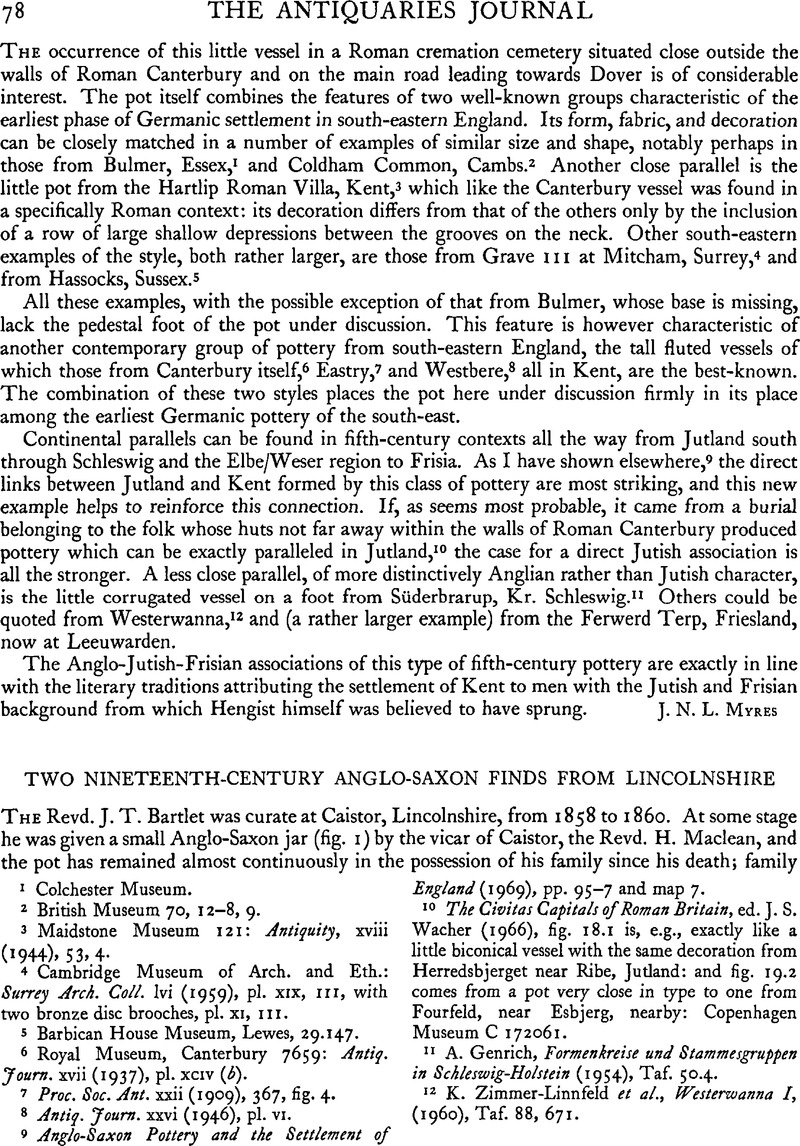Published online by Cambridge University Press: 29 November 2011

page 79 note 1 See Arch. Journ. ciii (1946), 23Google Scholar; Rahtz, Philip, ‘Caistor, Lincolnshire—1959’, Antiq. Journ. xl (1960), 175–87CrossRefGoogle Scholar, especially p. 182 and fig. 3, p. 184.
page 80 note 1 Arch. Journ. vi (1849), 411Google Scholar. See also the Castle Hill evidence discussed below, although the Anglo-Saxon character of this is not proven.
page 80 note 2 A. Genrich, Formenkreise und Stammesgruppen in Schleswig-Holstein (1954), Tafeln 8F and 25C3.
page 80 note 3 I am grateful to Mrs. S. C. Hawkes, F.S.A., for information about the vessel from Grave 34, which had no datable associations.
page 80 note 4 Meaney, A. L., A Gazetteer of Early Anglo-Saxon Burial Sites (1964), p. 155Google Scholar.
page 80 note 5 Meaney, op. cit., p. 160.
page 80 note 6 Arch. Journ. xiv (1857), 174Google Scholar.
page 80 note 7 Information kindly supplied by C. N. Moore and Paul Everson.
page 81 note 1 See Rahtz, op. cit., p. 187.
page 81 note 2 It should be noted, however, that William Stukeley, who previously recorded the discovery of these inhumations, placed Castle Hill south-west of the church (fig. 2, D) (Itinerarium Curiosum (2nd ed. 1776), p. 102). Mr. J. Richards of Caistor tells me that the name currently applies to the plot south-east of the one marked B on fig. 2 and that the adjacent lane is also called Castle Hill. I am grateful to him and to the Revd. H. Roth well for transmitting this information, and for other help.
page 81 note 3 Arch. Journ. vi (1849), 412Google Scholar.
page 81 note 4 Arch. Journ. xxi (1864), 264–5Google Scholar.
page 81 note 5 Meaney, op. cit., p. 162.